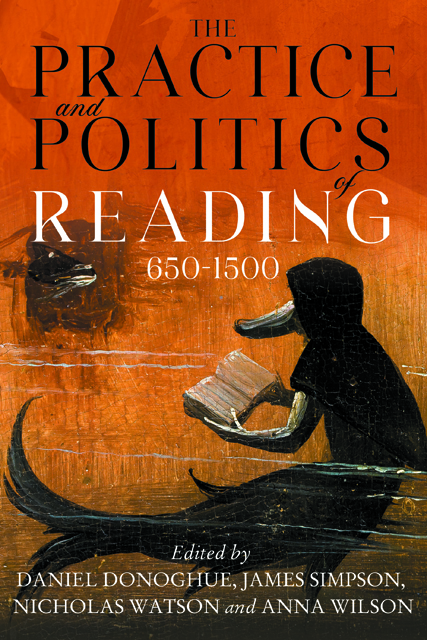165 results
Dementia risk and cognitive decline: the impacts of socioeconomic status and modifiable risk factors from a longitudinal Maastricht Aging Study
-
- Journal:
- International Psychogeriatrics / Accepted manuscript
- Published online by Cambridge University Press:
- 13 May 2024, pp. 1-8
-
- Article
- Export citation
A CBT-based training module for UK health visitors who support parents with excessively crying babies: development and initial evaluation
-
- Journal:
- Primary Health Care Research & Development / Volume 25 / 2024
- Published online by Cambridge University Press:
- 19 April 2024, e20
-
- Article
-
- You have access
- Open access
- HTML
- Export citation
‘Only my family can help’: the lived experience and care aesthetics of being resident on an NHS psychiatric/mental health inpatient dementia assessment ward – a single case study
-
- Journal:
- Ageing & Society , First View
- Published online by Cambridge University Press:
- 27 March 2024, pp. 1-22
-
- Article
-
- You have access
- Open access
- HTML
- Export citation
Head and Neck Cancer: United Kingdom National Multidisciplinary Guidelines, Sixth Edition
-
- Journal:
- The Journal of Laryngology & Otology / Volume 138 / Issue S1 / April 2024
- Published online by Cambridge University Press:
- 14 March 2024, pp. S1-S224
- Print publication:
- April 2024
-
- Article
-
- You have access
- Open access
- HTML
- Export citation
P37: A systematic review on inequalities in accessing and using social care in dementia – from pre- and pandemic times to moving beyond
-
- Journal:
- International Psychogeriatrics / Volume 35 / Issue S1 / December 2023
- Published online by Cambridge University Press:
- 02 February 2024, pp. 238-239
-
- Article
-
- You have access
- Export citation
A systematic review on inequalities in accessing and using community-based social care in dementia
-
- Journal:
- International Psychogeriatrics , First View
- Published online by Cambridge University Press:
- 12 May 2023, pp. 1-24
-
- Article
- Export citation
Modelling mood updating: a proof of principle study
-
- Journal:
- The British Journal of Psychiatry / Volume 222 / Issue 3 / March 2023
- Published online by Cambridge University Press:
- 13 December 2022, pp. 125-134
- Print publication:
- March 2023
-
- Article
-
- You have access
- Open access
- HTML
- Export citation
Introduction
-
-
- Book:
- The Practice and Politics of Reading, 650-1500
- Published by:
- Boydell & Brewer
- Published online:
- 11 January 2023
- Print publication:
- 06 September 2022, pp 1-18
-
- Chapter
- Export citation
Contents
-
- Book:
- The Practice and Politics of Reading, 650-1500
- Published by:
- Boydell & Brewer
- Published online:
- 11 January 2023
- Print publication:
- 06 September 2022, pp vii-viii
-
- Chapter
- Export citation
Part I - Practices of Reading
-
- Book:
- The Practice and Politics of Reading, 650-1500
- Published by:
- Boydell & Brewer
- Published online:
- 11 January 2023
- Print publication:
- 06 September 2022, pp 19-20
-
- Chapter
- Export citation
Abbreviations
-
- Book:
- The Practice and Politics of Reading, 650-1500
- Published by:
- Boydell & Brewer
- Published online:
- 11 January 2023
- Print publication:
- 06 September 2022, pp xiii-xiv
-
- Chapter
- Export citation

The Practice and Politics of Reading, 650-1500
-
- Published by:
- Boydell & Brewer
- Published online:
- 11 January 2023
- Print publication:
- 06 September 2022
Dedication
-
- Book:
- The Practice and Politics of Reading, 650-1500
- Published by:
- Boydell & Brewer
- Published online:
- 11 January 2023
- Print publication:
- 06 September 2022, pp v-vi
-
- Chapter
- Export citation
Acknowledgments
-
- Book:
- The Practice and Politics of Reading, 650-1500
- Published by:
- Boydell & Brewer
- Published online:
- 11 January 2023
- Print publication:
- 06 September 2022, pp xii-xii
-
- Chapter
- Export citation
Frontmatter
-
- Book:
- The Practice and Politics of Reading, 650-1500
- Published by:
- Boydell & Brewer
- Published online:
- 11 January 2023
- Print publication:
- 06 September 2022, pp i-iv
-
- Chapter
- Export citation
Part II - Politics of Reading
-
- Book:
- The Practice and Politics of Reading, 650-1500
- Published by:
- Boydell & Brewer
- Published online:
- 11 January 2023
- Print publication:
- 06 September 2022, pp 159-160
-
- Chapter
- Export citation
Bibliography
-
- Book:
- The Practice and Politics of Reading, 650-1500
- Published by:
- Boydell & Brewer
- Published online:
- 11 January 2023
- Print publication:
- 06 September 2022, pp 289-320
-
- Chapter
- Export citation
A Note on the Bloomfield Conferences
-
- Book:
- The Practice and Politics of Reading, 650-1500
- Published by:
- Boydell & Brewer
- Published online:
- 11 January 2023
- Print publication:
- 06 September 2022, pp 321-322
-
- Chapter
- Export citation
Contributors and Editors
-
- Book:
- The Practice and Politics of Reading, 650-1500
- Published by:
- Boydell & Brewer
- Published online:
- 11 January 2023
- Print publication:
- 06 September 2022, pp xi-xi
-
- Chapter
- Export citation
List of Illustrations
-
- Book:
- The Practice and Politics of Reading, 650-1500
- Published by:
- Boydell & Brewer
- Published online:
- 11 January 2023
- Print publication:
- 06 September 2022, pp ix-x
-
- Chapter
- Export citation

